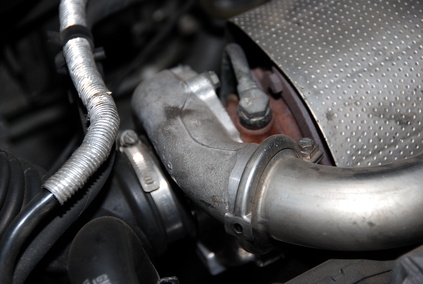
The plumbing of an turbo intercooler system can look intimidating at first glance. With all of the bends and vacuum line hook-ups, the system appears much more complex than it actually is. In truth, the most complex part of an intercooler system is getting it to fit efficiently into the engine bay. The intercooler must effectively cool the turbo's charged air, while allowing adequate airflow to the radiator and other vital engine parts. At the same time, the plumbing needs to be as simple as possible to reduce turbo lag and pressure loss. Whether you buy your intercooler kit aftermarket or have the plumbing made custom, the installation is relatively straightforward once the parts are in hand.
Install the intercooler unit itself before you fit the plumbing. This will vary depending on vehicle, but generally intercoolers are front-mounted, attached to the inside of the bottom bumper bay via flange screws. Some makes and models lack adequate room in the bumper for installation of an intercooler, thus the bumper needs to be removed. Mark the area needed to be removed for proper intercooler fitment, then cut this section out of your bumper with an angle grinder. Reinstall the bumper and attach the intercooler unit.
Fit the intercooler down piping to your turbo system. The down pipe attaches from the turbocharger compressor wheel's exducer to the intercooler unit. Fit the piping into place, then attach at both ends with the supplied rubber fittings and clamp rings. Make sure all clamps are tightly secured to avoid boost leaks.
Attach the intercooler system's up piping. This is the section that leads from the intercooler unit's outlet to the engine's throttle body. The procedure is the same as for the down pipe -- fit the piping into place and secure by tightening the supplied clamp rings over the rubber fittings. Be sure to plug all stock sensors and vacuum lines into their designated places on the intercooler up pipe.
Install a blow-off valve to the intercooler's up pipe. This is an air-gasket device that allows excess charged air to escape the intake track. Numerous universal units are produced by aftermarket manufacturers. To install, fit the blow-off valve onto the designated flange on the intercooler's up pipe, then secure with supplied flat-head screws.